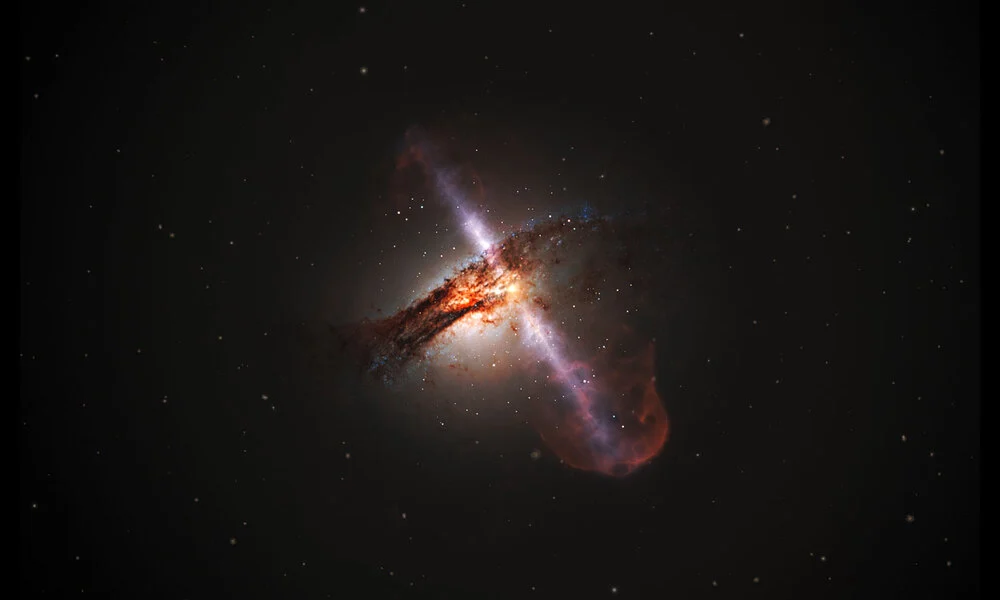Faintest and Closest Optical Tidal Disruption Event Observed
Published on Mon Jul 17 2023 Large Hubble Survey Confirms Link between Mergers and Supermassive Black Holes with Relativistic Jets | NASA Goddard Space Flight Center on Flickr
Large Hubble Survey Confirms Link between Mergers and Supermassive Black Holes with Relativistic Jets | NASA Goddard Space Flight Center on FlickrA team of astronomers has made an exciting discovery - the faintest and closest optical tidal disruption event (TDE) ever observed in the nearby star-forming galaxy NGC 3799. Tidal disruption events occur when a star gets too close to a supermassive black hole and is torn apart, producing a bright flare of radiation. These events are usually observed in the ultraviolet to soft X-ray bands, but this particular TDE was discovered in the optical spectrum.
The TDE, known as AT 2023clx, was detected based on its position at the center of the galaxy, its light curve (the measure of its brightness over time) declining as t^−5/3, and its characteristic features such as broad Balmer lines and He II 4686 Å emission. What makes this discovery truly remarkable is that AT 2023clx is the faintest TDE ever discovered and also the closest one to us. With a redshift of 0.01107 and a corresponding distance of 47.8 million parsecs, or about 155 million light-years, this TDE is right in our cosmic backyard.
AT 2023clx reached its peak brightness at an absolute magnitude of -17.16 in the g band, making it incredibly faint compared to other TDEs. Its maximum blackbody bolometric luminosity, which measures the total energy emitted, was 4.56 × 10^42 erg s^-1. The discovery of AT 2023clx highlights the possibility of many more faint TDEs yet to be discovered, especially given that current surveys might have missed them due to their limited sensitivity.
The findings of this study have important implications for our understanding of TDEs and the overall population of these events. The researchers suggest that faint TDEs could actually make up the majority of TDEs that occur in the universe, but we have been biased towards detecting the bright ones due to the limitations of current surveys. As future surveys, such as the Legacy Survey of Space and Time (LSST) and the Wide-Field Survey Telescope (WFST), become operational, astronomers expect to find more faint TDEs, helping them measure the occurrence rate of these events and refine our knowledge of the lower end of the TDE luminosity function.
This discovery was made possible through the All Sky Automated Survey for SuperNovae (ASAS-SN), which initially detected the event. The astronomers followed up with observations and data analysis to confirm AT 2023clx as a TDE candidate. The research is supported by various institutions and projects, including the Chinese Academy of Sciences and the Telescope Access Program. The researchers express their gratitude to the anonymous referee for their valuable feedback, which helped improve the study.
This fascinating discovery not only sheds light on the nature of tidal disruption events, but it also highlights the importance of continued exploration and advancements in our understanding of the universe. As we uncover more faint TDEs and expand our knowledge of these cosmic events, we can further unravel the mysteries of black holes, star formation, and the dynamic processes occurring in galaxies.



